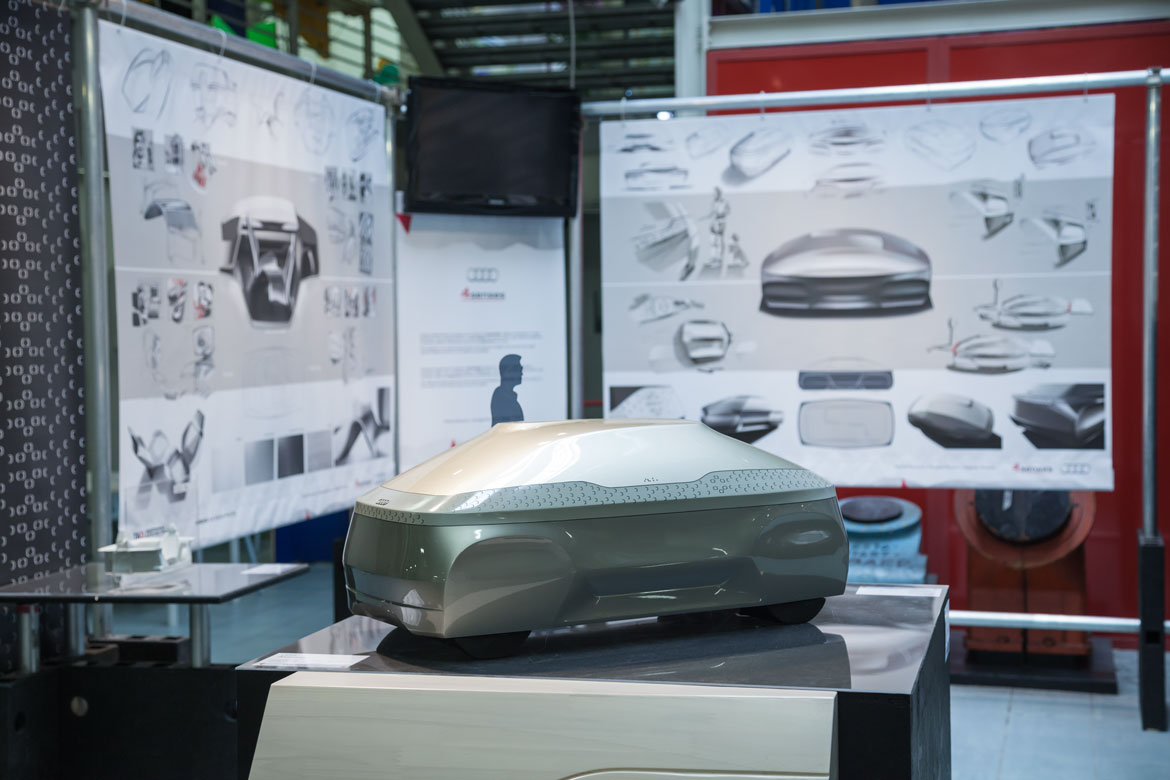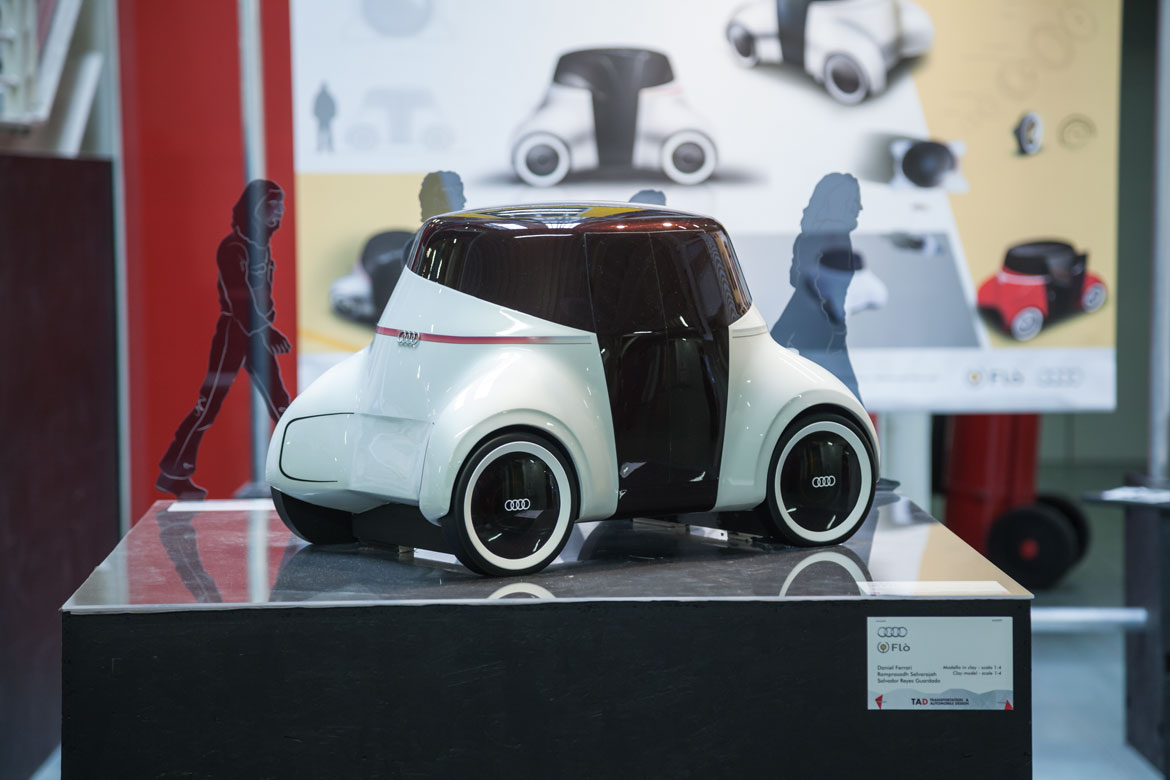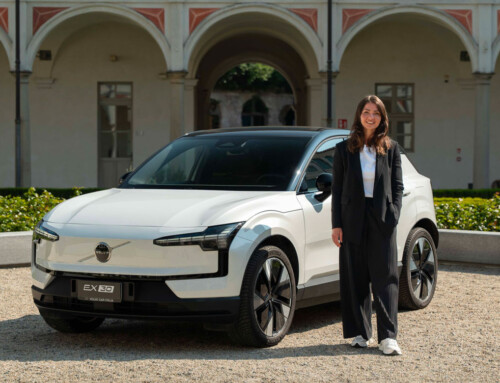To go beyond conventional concepts of automotive transport is not easy, but the advent of autonomous driving is exerting an increasingly more evident influence in every aspect of design in this industry, opening new vistas in terms of styling and conceptual freedom.
This controversial issue, the subject of heated debate among professionals of the world’s biggest carmakers, was tackled by the students of the seventh edition of the Master’s course in Transportation & Automobile Design at the Milan Polytechnic Design School in a collaborative initiative with the Volkswagen Group.
The brief “Autonomous drive cars for inner and inter city connections” assigned by professionals from Audi and Volkswagen (the two brands involved in the project) in accordance with the directors of the Master’s course, gave the young designers – grouped into four teams – the chance to push the boundary between the potential for innovation and the critical limitations of this new transportation frontier.
Full article in Auto&Design no. 220
Audi “4senses” by Fabrizio Buonomo, Giuseppe Romano and Pasquale Smimmo.
A car targeting very specific users who have never been considered before – non-sighted persons – with original solutions to offer a comfortable, safe on-board experience which involves the user as extensively as possible with stimuli for senses other than sight. Special vents and speakers emanate scents and sounds to recreate the surrounding environment, while an ingenious interactive surface, inspired by the “Megafaces” installation created by Asif Khan for the Sochi games, uses tiny hydraulic pistons to generate tactile replicas of monuments encountered during the journey. Every aspect is intended to make the user feel at home, from the wooden panels surrounding the car and the Braille instructions for accessing the car to the two vis-à-vis seats in the cabin with a space in front for guide dogs.
Audi “Flò” by Daniel Ferrari, Salvador Reyes Guardado and Ramprasadh Selvarajah.
Inspired by the conviviality and sharing of a bonfire, this elliptical car encourages interaction between its occupants. The use of shape-memory materials makes it possible to reconfigure the seats from a bench with central table to a pair of chaises longues, transforming the interior space in relation to the journey and the number of persons on board. The boundary between automotive and product design has been blurred in this bidirectional proposal with a compact and unusual shape inspired by the formal rationality of the 1970s Braun coffee maker.
Volkswagen “Bull.e” by Gianluca Bartolini, Mithun Ekanath and Jacopo Giovanardi.
A concept reinterpreting the iconic T1 – known also ‘Bulli’ – in a modern, essential key in keeping with the logical, rational formal language of the German carmaker. A wide choice of internal configurations cater for different concepts of camping while reinventing the spirit of camping itself, whether for a family with kids, a solo surfer or a bunch of friends looking for adventure. Using smart materials that can adapt and reconfigure in response to different needs, this vehicle is a veritable mobile home which even sports a concertina rooftop tent like the historic T1, that adds over 50 cm of headroom in camper configuration.
Audi “Red” by Agostinho Peiter, Gustavo Bernardi and Lorenzo Marelli.
A car conceived to astonish and create anticipation as it pulls up to the red carpet of today’s major entertainment events, revealing its VIP occupants to the paparazzi and the crowds waiting for their idols. Imposing in size – and in height in particular – and boasting unusual proportions, when closed, the car conceals its original access system: a spectacular door opening to a height of 2.19 meters, which lets passengers enter and exit the vehicle in an upright position. The many solutions explored which eventually led to the unusual shape of this proposal were all primarily centred on the distinctive access system, with the style, volumes and even the very architecture of the vehicle tailored around this feature.

















